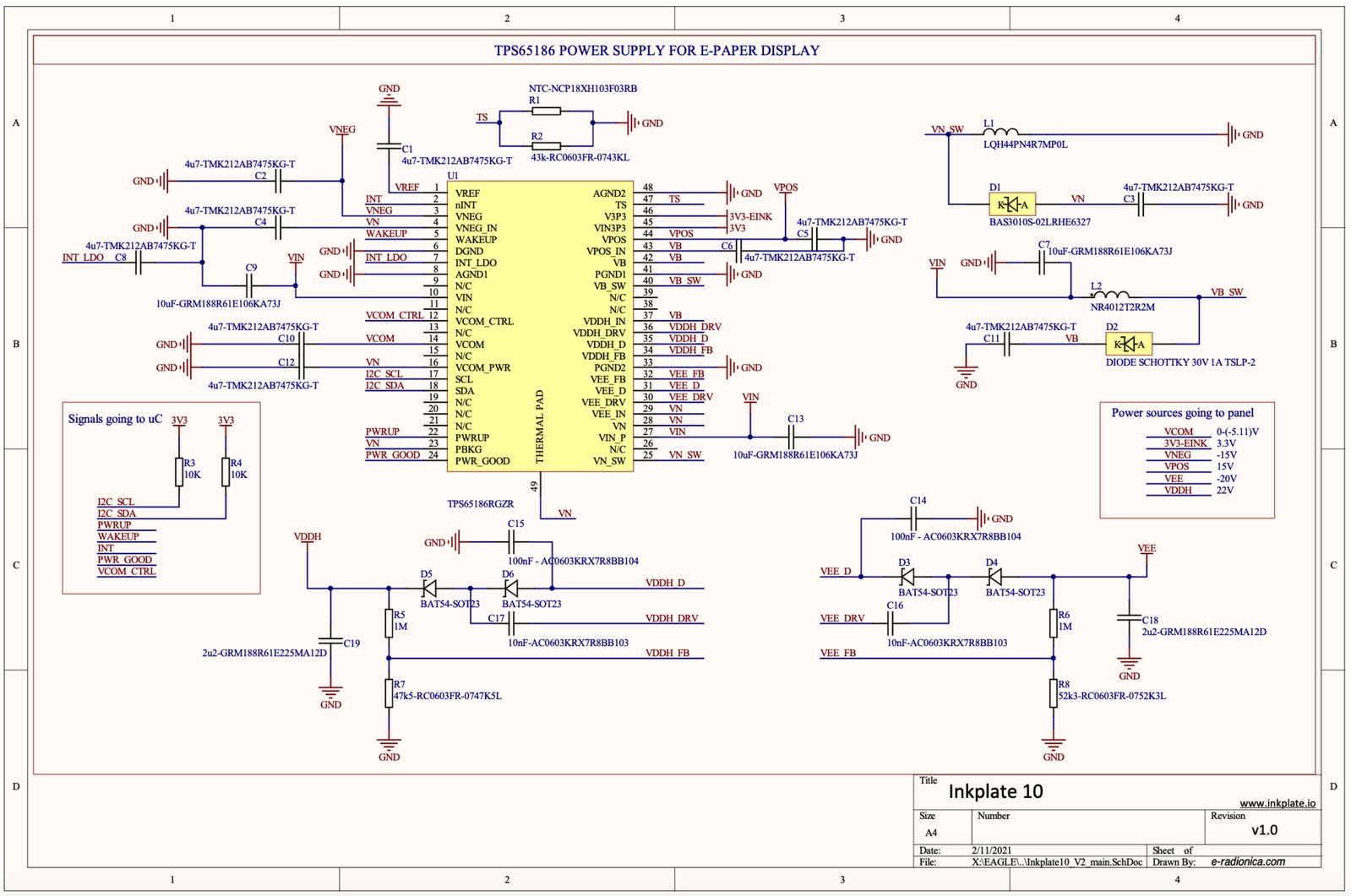Hello all,
And thank you for your ongoing support! Inkplate has proven to be very interesting to makers all over the world, and we can definitely say that we will continue to add great hardware and software to the Inkplate family. You can expect a lot of new Inkplate-related news in future updates!
But for now, back to Inkplate 10! Our design has been finalized, and we are ready to publish our open-source files. You can find all the goodies in the Inkplate 10 Hardware repo—Version 1.0 is what you’re looking for.
Below, we provide a short walk-through, below, starting with the schematics.
The Schematics
Inkplate 10’s brain is an ESP32-WROVER, a powerful microcontroller with Wi-Fi support. This is the beast that you will program, and it drives the other components, including the super-sensitive e-paper signal lines. The WROVER version of the ESP32 contains external RAM, which is needed for storing the state of the nearly one million pixels that make up Inkplate 10’s 9.7-inch screen (especially when it’s in grayscale mode). MCP23017 IO expanders come to the rescue when the EPD (Electronic Paper Display) needs some extra signal lines and to provide user GPIO pins.
The Power Supply
With an adjustable VCOM voltage and the output versatility needed to drive an EPD—-20 V, -15 V, 3.3 V, 15 V, and 22 V—a TPS65186 does the heavy lifting. A TPS7A2633 handles 3.3 V for the whole system, and does so with a super-low quiescent current, which makes low-power mode possible. The Li-ion battery charger is an MCP73831 and the power source is selected automatically.
The RTC
The newest addition is the Real Time Clock (RTC). A PCF85063A keeps track the time and has the ability to wake up the ESP32 at a specified time in order to further reduce power usage.
Other Tidbits
And that’s just for starters! There’s a lot more to see in the schematics: a touch controller, an SD card slot, a reset supervisor, test pads, a wake-up button, an on-off switch circuit, a CH340C as a USB-UART converter, battery measurement logic, easyC support, and so on.
Other Design Files
The repo also includes our BOM, which lists all of the components required to manufacture a single Inkplate 10. And, if you’re looking to do that yourself, you’ll also want our Gerbers. And finally, our 3D .step file for the PCB is available as well, in case you want to play around with the model or design your own housing.
Thanks again for all the support! And remember, if you have any questions at all, you can reach us using the contact form on our campaign page.
David & the team
